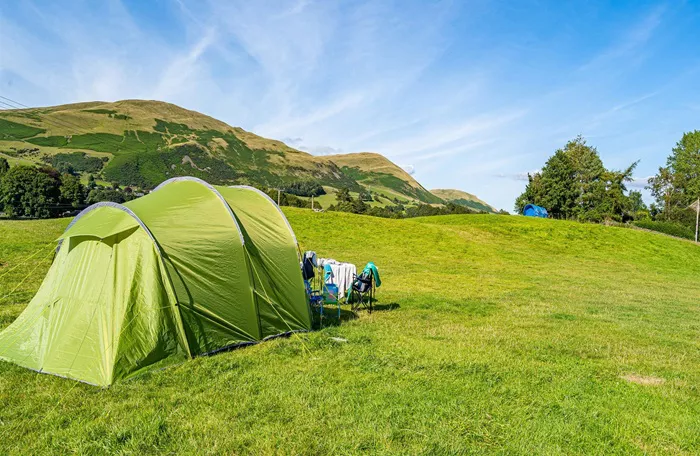Camping is a great way to connect with nature. It lets you escape city life. You get fresh air and beautiful views. But finding good camping spots can be tricky. This guide will help you find perfect places to camp near your location.
How to Find Camping Spots Near You
First, you need to know what kind of camping you want. There are several options:
Public Campgrounds
These are run by government agencies. They often have basic facilities. You’ll find toilets and sometimes showers. Many have picnic tables and fire pits.
Private Campgrounds
These are owned by companies or individuals. They often have more amenities. Some have swimming pools and stores. They might cost more than public ones.
Dispersed Camping
This means camping outside designated areas. It’s usually free. But you won’t find any facilities. You need to bring everything with you.
Backcountry Camping
This is for experienced campers. You hike to remote locations. You carry all your gear. Permits are often required.
Best Tools to Find Nearby Campgrounds
Several websites and apps can help you find camping spots:
- Recreation.gov – Shows federal land camping options
- Hipcamp – Like Airbnb for camping
- The Dyrt – Has user reviews of campgrounds
- AllTrails – Good for finding hiking trails with camping
Your state’s parks website will also have information. County parks often have campgrounds too.
What to Look for in a Campground
Consider these factors when choosing a spot:
- Distance from your home: How far you want to drive
- Facilities: Do you need showers or just a toilet?
- Activities: Swimming, hiking, fishing available?
- Crowds: Busy family spots or quiet nature areas?
- Cost: Free sites or paid campgrounds?
- Season: Some close in winter
Types of Camping Areas
National Parks
These have stunning natural features. Campsites often fill fast. You usually need reservations. Examples include Yosemite and Yellowstone.
State Parks
Every state has these. They’re well-maintained. Good for families. Often have nature programs.
National Forests
More rustic than parks. Usually cheaper. Often allow dispersed camping. Great for solitude.
Bureau of Land Management (BLM) Areas
Lots of open space in western states. Many free camping options. Few facilities.
County and City Parks
Often overlooked. Can be close to home. Good for quick trips.
Preparing for Your Camping Trip
Once you pick a spot, get ready:
- Check the weather: Be prepared for rain or cold
- Make reservations: Many places require this
- Pack properly: Bring essentials but don’t overpack
- Learn rules: Know fire regulations and quiet hours
- Prepare food: Plan simple meals that are easy to cook
Leave No Trace Principles
Follow these when camping:
- Plan ahead and prepare
- Travel and camp on durable surfaces
- Dispose of waste properly
- Leave what you find
- Minimize campfire impacts
- Respect wildlife
- Be considerate of other visitors
Safety Tips for Campers
Stay safe while enjoying nature:
- Tell someone your plans
- Bring a first aid kit
- Have navigation tools (map and compass)
- Store food properly to avoid animals
- Know basic first aid
- Check for ticks and poison ivy
Camping With Kids
Family camping can be fun. Try these tips:
- Pick sites with activities for kids
- Bring familiar foods
- Pack extra clothes
- Choose shorter trips at first
- Bring games and toys
- Practice setting up tent at home first
Winter Camping Basics
Cold weather camping needs extra preparation:
- Use a four-season tent
- Bring warm sleeping bags
- Pack insulating sleeping pads
- Wear layers of clothing
- Stay dry – moisture makes you cold
- Eat high-energy foods
Essential Gear Checklist
Don’t forget these items:
- Tent with rainfly
- Sleeping bag and pad
- Cooking equipment
- Food and water
- Lighting (headlamp or flashlight)
- Proper clothing
- First aid kit
- Map and compass
Finding Free Camping Spots
Want to camp without paying? Try these:
- BLM land (mostly in western states)
- National Forests (often allow dispersed camping)
- Some Walmart parking lots (for RVs only)
- Truck stops (for short stays)
- Ask private landowners for permission
Remember: “Free” doesn’t mean no rules. Always follow regulations.
Making Camping Reservations
Popular spots fill up fast. Here’s how to get sites:
- Book early: Some parks take reservations 6 months ahead
- Be flexible: Try mid-week or off-season
- Check cancellations: People often change plans
- Arrive early: Some sites are first-come, first-served
Alternative Camping Options
Not into traditional camping? Try these:
- Cabin camping: Roof over your head but still in nature
- Glamping: Fancy tents with real beds
- RV camping: All the comforts of home
- Hammock camping: Sleep off the ground
Conclusion
Camping near your home can be easy and fun. Start with developed campgrounds if you’re new. As you gain experience, try more remote spots. Always respect nature and other campers. The perfect camping spot is waiting for you – just get out and find it!
Remember: The best camping trip is the one you actually take. Don’t overplan – just go enjoy nature. Even a single night under the stars can refresh your spirit. Happy camping!
Related topics:
Why Is It Important to Plan a Camping Trip
What to Pack for a Week-Long Camping Trip
Why Camping Is Good for You: A Comprehensive Guide

